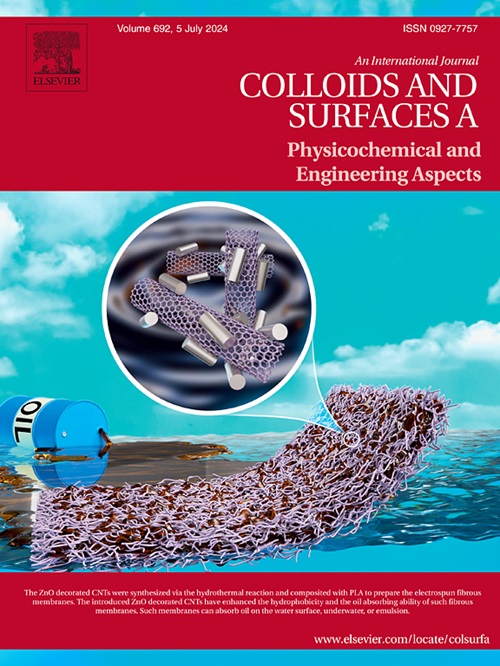Efficient treatment of coking wastewater by coal-based activated carbon prepared through coal blending method
IF 4.9
2区 化学
Q2 CHEMISTRY, PHYSICAL
Colloids and Surfaces A: Physicochemical and Engineering Aspects
Pub Date : 2024-11-04
DOI:10.1016/j.colsurfa.2024.135675
引用次数: 0
Abstract
In this study, the adsorption performance of coal-based activated carbon produced from Shandong gas-fertilized coal, Taixi anthracite coal, and Datong weakly viscous coal, was investigated for coking wastewater treatment. All prepared activated carbons demonstrated excellent adsorption performance, boasting an iodine number surpassing 1000 mg/g and achieving a chemical oxygen demand determined by the dichromate method (CODcr) removal rate of over 85 % under static coking wastewater adsorption. A positive correlation exists between the total pore volume of activated carbon and its iodine number, methylene blue value, and caramel decolorization rate. Furthermore, dynamic adsorption experiments were conducted and there was an evident increase in the CODcr removal rate as the flow rate decreased. However, increasing the bed height beyond 400 mm only marginally enhanced the CODcr removal rate. The burn-off rate of activated carbon and the ratio of raw materials significantly influenced the pore structure. Notably, with a high anthracite ratio (40 %), elevating the burn-off rate (up to 70 %) did not enhance the effective porosity of activated carbon. The mesopore volume, particularly within 1.2–2.8 nm range, exerted a substantial influence on the coking wastewater adsorption efficiency. Overall, coal-based activated carbon demonstrated significant promise as a cost-effective adsorbent for coking wastewater treatment.
用配煤法制备的煤基活性炭高效处理焦化废水
本研究考察了以山东气肥煤、泰西无烟煤和大同弱粘煤为原料制备的煤基活性炭在焦化废水处理中的吸附性能。所有制备的活性炭均表现出优异的吸附性能,在静态焦化废水吸附条件下,碘数超过 1000 mg/g,重铬酸钾法测定的化学需氧量(CODcr)去除率超过 85%。活性炭的总孔容积与其碘数、亚甲基蓝值和焦糖脱色率之间存在正相关。此外,还进行了动态吸附实验,随着流速的降低,CODcr 的去除率明显增加。然而,将床层高度增加到 400 毫米以上,也只能略微提高 CODcr 去除率。活性炭的烧损率和原料配比对孔隙结构有显著影响。值得注意的是,在无烟煤比例较高(40%)的情况下,提高烧除率(高达 70%)并不能提高活性炭的有效孔隙率。中孔体积,尤其是 1.2-2.8 nm 范围内的中孔体积,对焦化废水的吸附效率有很大影响。总之,煤基活性炭作为一种经济高效的焦化废水处理吸附剂前景广阔。
本文章由计算机程序翻译,如有差异,请以英文原文为准。
求助全文
约1分钟内获得全文
求助全文
来源期刊
CiteScore
8.70
自引率
9.60%
发文量
2421
审稿时长
56 days
期刊介绍:
Colloids and Surfaces A: Physicochemical and Engineering Aspects is an international journal devoted to the science underlying applications of colloids and interfacial phenomena.
The journal aims at publishing high quality research papers featuring new materials or new insights into the role of colloid and interface science in (for example) food, energy, minerals processing, pharmaceuticals or the environment.

 求助内容:
求助内容: 应助结果提醒方式:
应助结果提醒方式:


